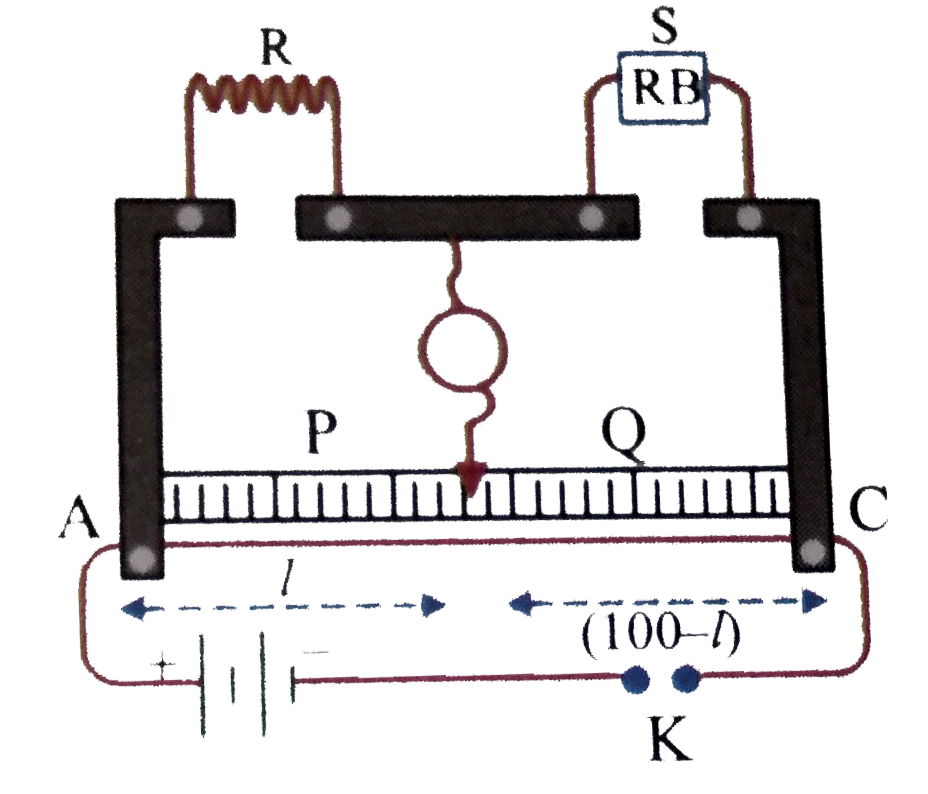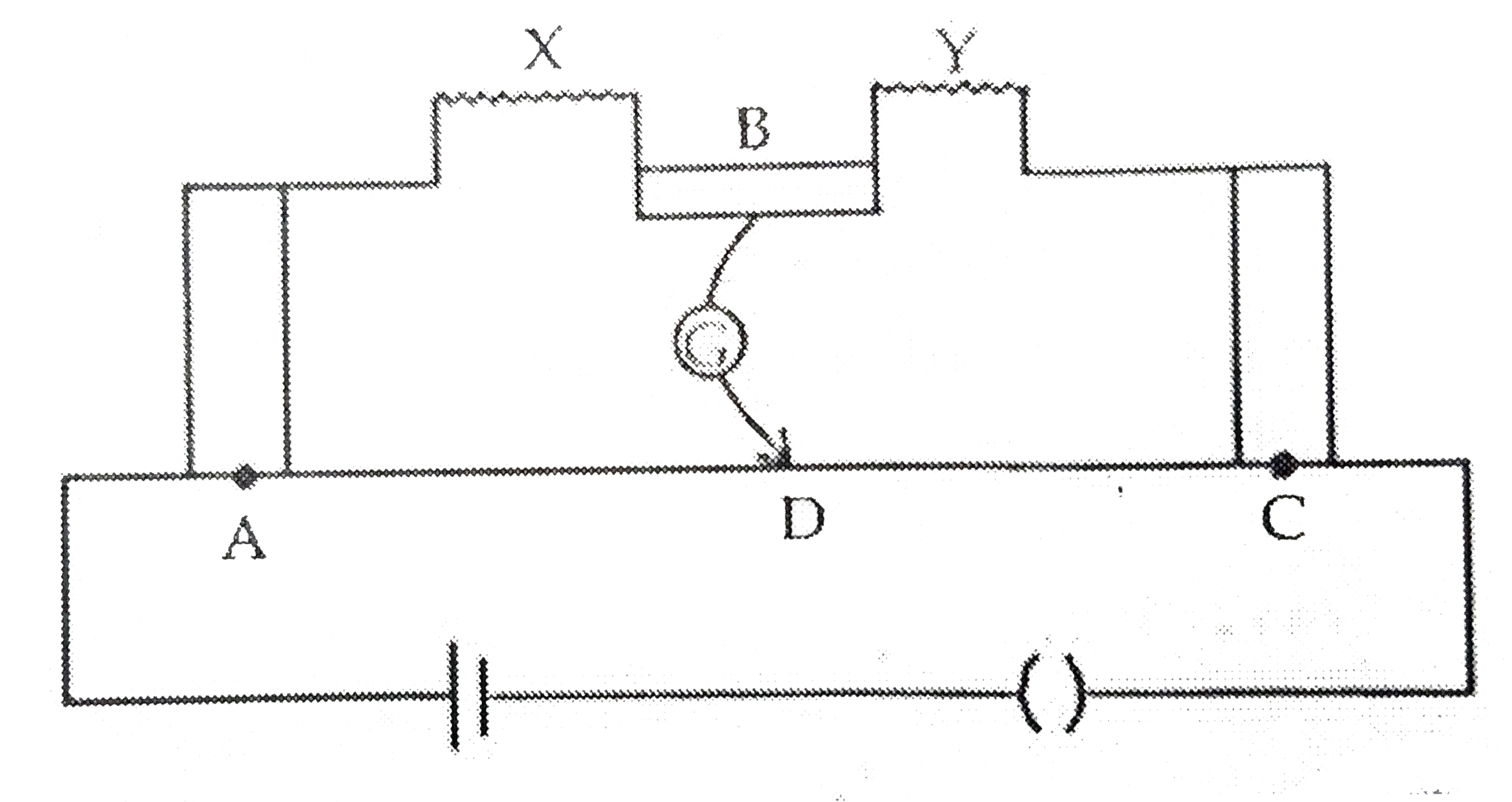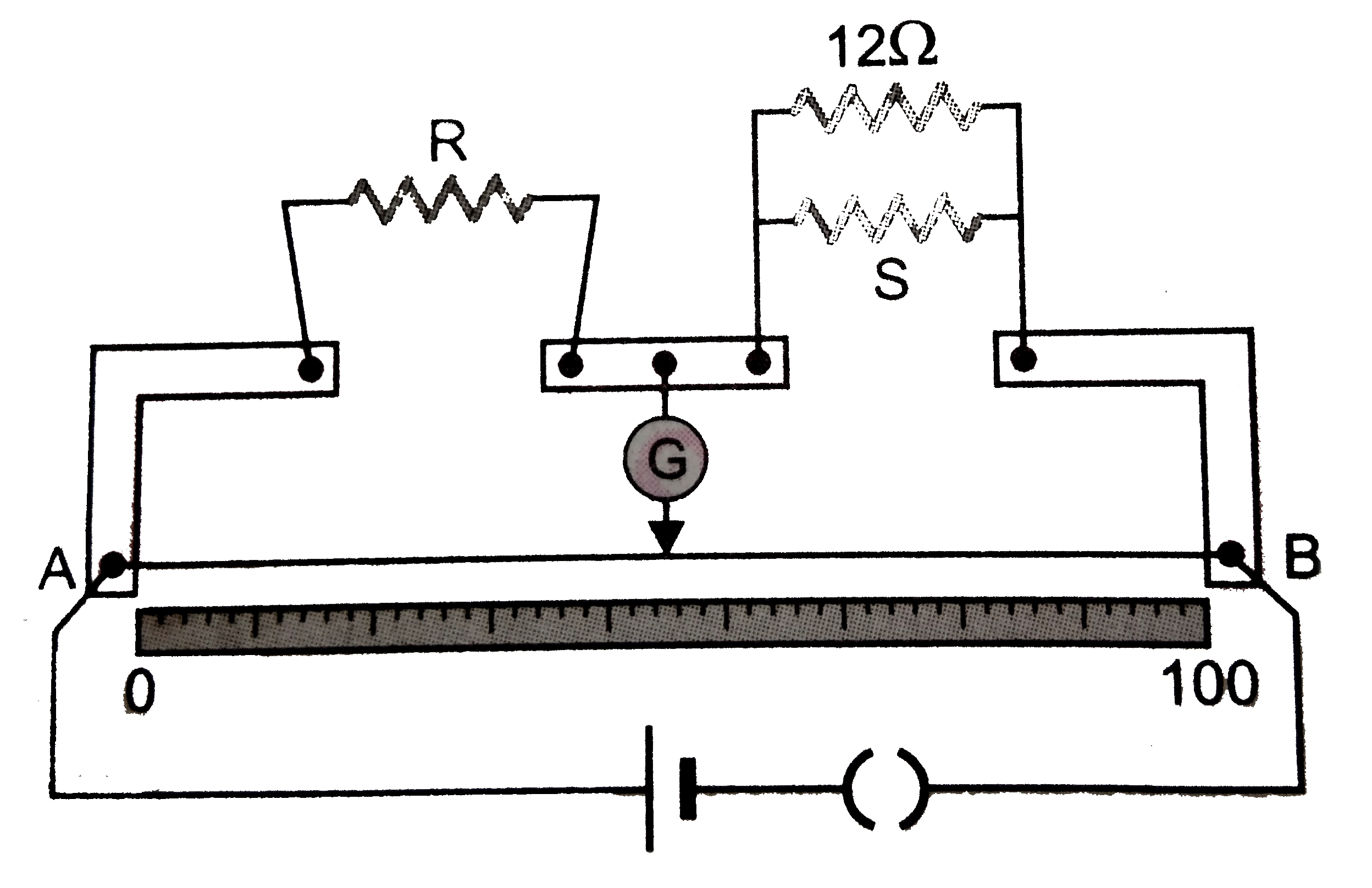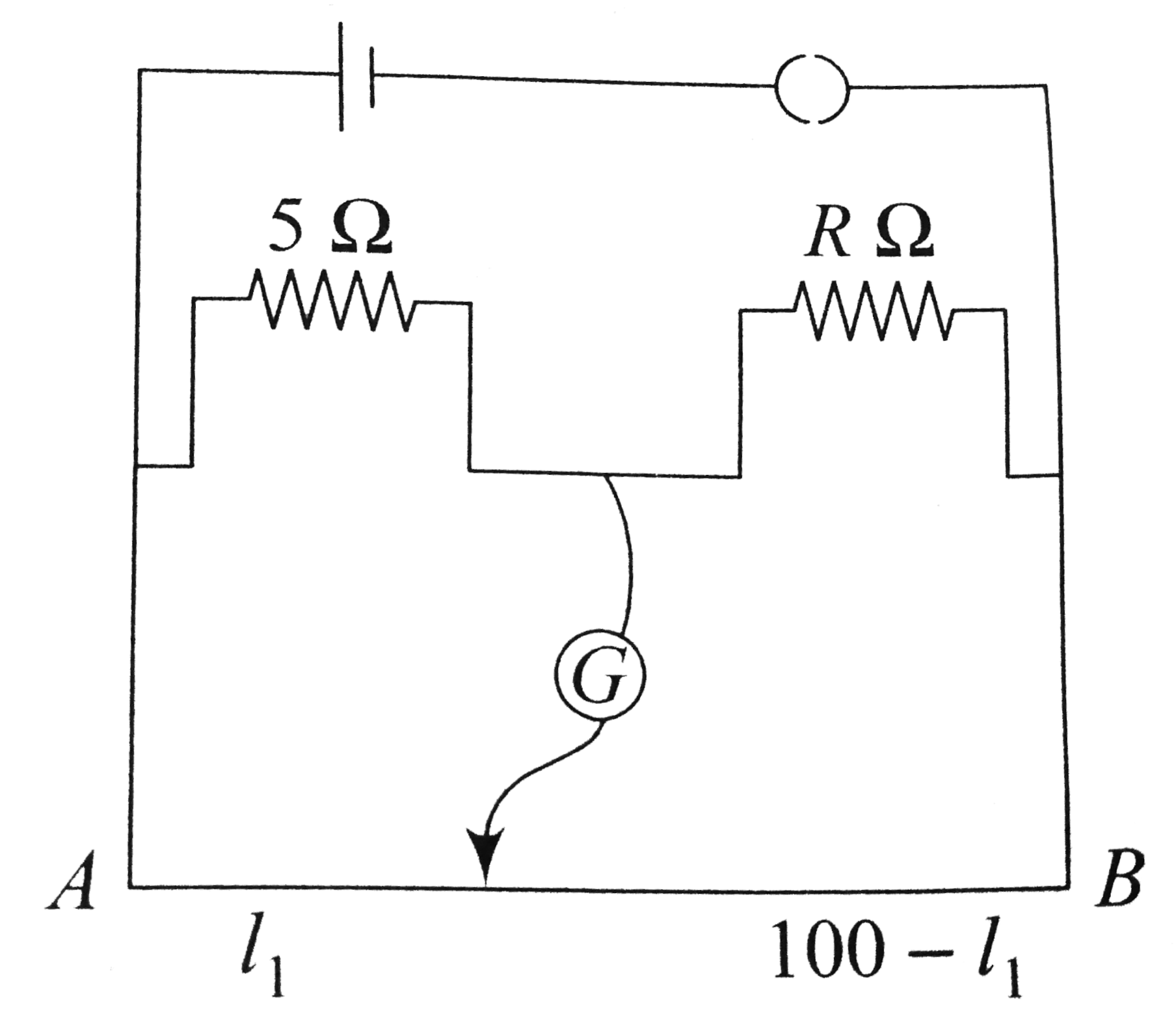A resistance R is to be measured using a meter bridge. Student chooses the standared resistance S to be 100Ω. He finds the null point at l1=2.9cm. He is told to attempt to improve the accuracy. Which of the folllowing is a useful way?
He should measure l1 more accurately.
He should change S to 1000 Q and repeat the \ experiment.
He should change S to 3 Q and repeat the experiment
He should give up hope of a more accurate measurement with a meter bridge.
The correct Answer is:C
To solve the problem of measuring the resistance R using a meter bridge with improved accuracy, we can follow these steps:
Step 1: Understanding the Meter Bridge Setup
In a meter bridge, two resistances are connected in a circuit. The unknown resistance R is placed in one gap, and a standard resistance S is placed in the other gap. The balance point (null point) is found by sliding a jockey along the bridge wire.
Step 2: Using the Formula for Resistance
The relationship between the resistances and the balancing length is given by the formula:
R=S⋅L100−L
where L is the length from one end of the bridge wire to the null point.
Step 3: Analyzing the Given Values
The student has chosen S=100Ω and found the null point at L1=2.9cm. We can substitute these values into the formula to find R:
R=100⋅2.9100−2.9=29097.1≈2.99Ω
Step 4: Improving Accuracy
To improve the accuracy of the measurement, the student is advised to change the standard resistance S. By increasing S to 1000Ω, the balancing length L will also increase, which allows for a more precise measurement of R. This is because larger lengths reduce the relative error in measurement.
Step 5: Conclusion
Thus, the best way to improve the accuracy of the measurement is to change the standard resistance S to 1000Ω and repeat the experiment.
In a meter bridge, two resistances are connected in a circuit. The unknown resistance R is placed in one gap, and a standard resistance S is placed in the other gap. The balance point (null point) is found by sliding a jockey along the bridge wire.
The relationship between the resistances and the balancing length is given by the formula:
R=S⋅L100−L
where L is the length from one end of the bridge wire to the null point.
The student has chosen S=100Ω and found the null point at L1=2.9cm. We can substitute these values into the formula to find R:
R=100⋅2.9100−2.9=29097.1≈2.99Ω
To improve the accuracy of the measurement, the student is advised to change the standard resistance S. By increasing S to 1000Ω, the balancing length L will also increase, which allows for a more precise measurement of R. This is because larger lengths reduce the relative error in measurement.
Thus, the best way to improve the accuracy of the measurement is to change the standard resistance S to 1000Ω and repeat the experiment.
Topper's Solved these Questions
- CURRENT ELECTRICITYBOOK - NCERT FINGERTPS ENGLISHCHAPTER - CURRENT ELECTRICITYEXERCISE - CORNER
15 Videos
- CURRENT ELECTRICITYBOOK - NCERT FINGERTPS ENGLISHCHAPTER - CURRENT ELECTRICITYEXERCISE - Ohm'S Law
7 Videos
- CURRENT ELECTRICITYBOOK - NCERT FINGERTPS ENGLISHCHAPTER - CURRENT ELECTRICITYEXERCISE - HOTS
8 Videos
- COMMUNITCATION SYSTEMSBOOK - NCERT FINGERTPS ENGLISHCHAPTER - COMMUNITCATION SYSTEMSEXERCISE - Assertion And Reason
30 Videos
- DUAL NATURE OF RADIATION AND MATTER BOOK - NCERT FINGERTPS ENGLISHCHAPTER - DUAL NATURE OF RADIATION AND MATTER EXERCISE - Assertion And Reason
15 Videos
Similar Questions
A resistance R is to be measured using a meter bridge. Student chooses the standard resistance S to be 100Ω. He finds the null point at l1=2.9cm. He is told to attempt to improve the accuracy. Which of the following is a useful way?
View SolutionIn a meter bridge, null point is at l=33.7cm, when the resistance S is shunted by 12Ω resitance the null point is found to be shifted by a distance of 18.2cm. The value of unknown resistance R should be

View SolutionIn a meter bridge, null point is 20cm, when the known resistance R is shunted by 10Ω resistance, null point is found to be shifted by 10 cm. Find the unknown resistance X.
View SolutionIn a meter bridge, null point is 20cm, when the known resistance R is shunted by 10Ω resistance, null point is found to be shifted by 10 cm. Find the unknown resistance X.
View SolutionIn a meter bride, null point is 20cm, when the known resistance R is shunted by 10Ω resistance, null point is found to be shifted by 10cm . Find the unknown resistance X.
View SolutionThe figure shows experimental set up of a meter bridge. When the two unknown resistances X and Y are inserted, the null point D is obtained 40 cm from the end A. When a resistance of 10Ω is connected in series with X, the null point shifts by 10 cm. Find the position of the null point when the 10Ω resistance is instead connected in series with resistance 'Y'. Determine the value of the resistance X and Y

View SolutionIn a meter bridge,

the null points is found at a distance of 33.7 cm from A. If now a resistance of 12Ω is connected in parallel with S, the null point occurs at 51.9 cm. Determine the values of R and S.
View SolutionIn a meter bridge, the null point is found at a distance of 40cm from A. If a resistance of 12Ω in connected in parallel with S the null point occurs at 50.0cm from A Determine the value of R and S

View SolutionAn unknown resistance r si determined in terms of a standared resistance R=100Ω by using potentiometer. The potential difference across r is balanced againt 45cm length of the wire and that (r+R) is obtained at 70cm of the wire. Find the value of the unknown resistance.
View SolutionThe resistance in the two arms of the meter bridge are 5Ω and RΩ, respectively. When the resistance R is shunted with an equal resistance, the new balance point is 1.6l1.
The resistance R is

View Solution
